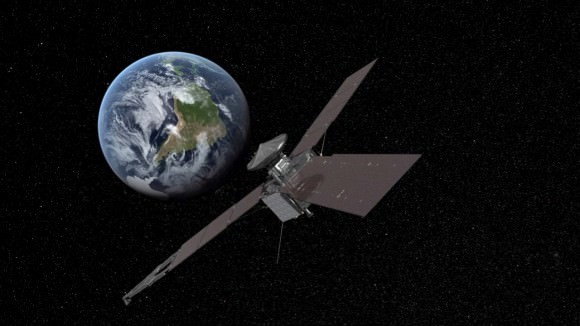Host: Scott Lewis
Astronomers: Stuart Forman, David Dickinson, Tom Nathe, Roy Salisbury, Mike Phillips, Thad Szabo
Host: Scott Lewis
Astronomers: Stuart Forman, David Dickinson, Tom Nathe, Roy Salisbury, Mike Phillips, Thad Szabo
Of course you do! (Who doesn’t?) And so here’s a wonderful tour of our Solar System to provide you with just the type of space you need.
A 3D animation project by Australian video artist Shane Gehlert, I Need Some Space takes us from low-Earth orbit to the Moon and Sun and then through the lineup of planets in the Solar System, using images and models from NASA to accurately depict their unique appearances. Along the way we’ll get some basic info on the planets, select moons, and a few of the various spacecraft that have visited (or are visiting) each world. Set to an intriguing string score by The Zephyr Quartet (of which Shane’s sister Belinda is a member) I Need Some Space is a mesmerizing 6-minute voyage for any space fan — myself very included.
I particularly like the “ghostly” look of Pluto, reminding us that we still have another year and a half before New Horizons reveals its true appearance to us.
Enjoy! (As with most videos, full-screening and HD-ing are strongly suggested.)
Video © Shane Gehlert/BlueDog Films. HT to FastCoCreate.
A combination of exceptionally clear weather, the steady approach of northern summer, and a poleward orbital path has given Cassini — and Cassini scientists — unprecedented views of countless lakes scattered across Titan’s north polar region. In the near-infrared mosaic above they can be seen as dark splotches and speckles scattered around the moon’s north pole. Previously observed mainly via radar, these are the best visual and infrared wavelength images ever obtained of Titan’s northern “land o’ lakes!”
Titan is currently the only other world besides Earth known to have stable bodies of liquid on its surface, but unlike Earth, Titan’s lakes aren’t filled with water — instead they’re full of liquid methane and ethane, organic compounds which are gases on Earth but liquids in Titan’s incredibly chilly -290º F (-180º C) environment.
While one large lake and a few smaller ones have been previously identified at Titan’s south pole, curiously almost all of Titan’s lakes appear near the moon’s north pole.
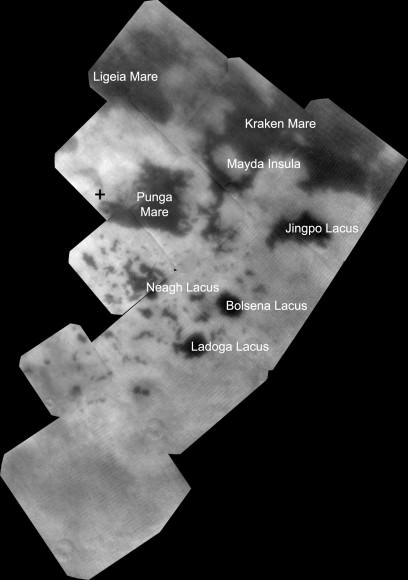
For an idea of scale, the large lake at the upper right above (and the largest lake on Titan) Kraken Mare is comparative in size to the Caspian Sea and Lake Superior combined. Kraken Mare is so large that sunlight was seen reflecting off its surface in 2009. Punga Mare, nearest Titan’s pole, is 240 miles (386 km) across.
Besides revealing the (uncannily) smooth surfaces of lakes — which appear dark in near-infrared wavelengths but would also be darker than the surrounding landscape in visible light — these Cassini images also show an unusually bright terrain surrounding them. Since the majority of Titan’s lakes are found within this bright region it’s thought that there could be a geologic correlation; is this Titan’s version of karst terrain, like what’s found in the southeastern U.S. and New Mexico? Could these lakes be merely the visible surfaces of a vast underground hydrocarbon aquifer? Or are they shallow pools filling depressions in an ancient lava flow?

Or, are they the remains of once-larger lakes and seas which have since evaporated? The orange-hued regions in the false-color mosaic may be evaporite — the Titan equivalent of salt flats on Earth. The evaporated material is thought to be organic chemicals originally from Titan’s haze particles that were once dissolved in liquid methane.
“Is this an indication that with increased warmth, the seas and lakes are starting to evaporate, leaving behind a deposit of organic material,” wrote Carolyn Porco, Cassini Imaging Team Leader, in an email earlier today. “…in other words, the Titan equivalent of a salt-flat?”
The largest lake at Titan’s south pole, Ontario Lacus, has been previously compared to such an ephemeral lake in Namibia called the Etosha Pan. (Read more here.)
These observations are only possible because of the extended and long-term study of Saturn and its family of moons by the Cassini spacecraft, which began with its establishing orbit in 2004 and has since continued across multiple seasons over a third of the ringed planet’s year. The existence of methane lakes on Titan is undoubtedly fascinating, but how deep the lakes are, where they came from and how they behave in Titan’s environment have yet to be discovered. Luckily, the changing season is on our side.
“Titan’s northern lakes region is one of the most Earth-like and intriguing in the solar system,” said Linda Spilker, Cassini project scientist, based at NASA’s Jet Propulsion Laboratory, Pasadena, Calif. “We know lakes here change with the seasons, and Cassini’s long mission at Saturn gives us the opportunity to watch the seasons change at Titan, too. Now that the sun is shining in the north and we have these wonderful views, we can begin to compare the different data sets and tease out what Titan’s lakes are doing near the north pole.”
The images shown above were obtained by Cassini’s visual and infrared mapping spectrometer (VIMS) during a close flyby of Titan on Sept. 12, 2013.
Read more on the Cassini Imaging Central Laboratory for Operations (CICLOPS) site here and on the NASA site here.
“But how thrilling it is to still be uncovering new territory on this fascinating moon… a place that, until Cassini’s arrival at Saturn nearly 10 years ago, was the largest single expanse of unseen terrain we had remaining in our solar system. Our adventures here have been the very essence of exploration. And it’s not over yet!”
– Carolyn Porco on Facebook

Also, check out a corresponding article and intriguing illustration of robotic Titan exploration by space artist extraordinaire Ron Miller on io9.com.
Sunday’s Virtual Star Party felt like a reunion, with Mike Phillips, Gary Gonella, and Roy Salisbury supplying images and Scott Lewis co-hosting. We were joined by newcomer James McGee streaming a beautiful view of the Moon – when it wasn’t blocked by his apartment tower.
The Moon was just past full, so it commanded attention, but we still got a beautiful view of some fainter nebulae, galaxies and star clusters.
Astronomers: Mike Phillips, Gary Gonella, Roy Salisbury, James McGee
Hosts: Fraser Cain, Scott Lewis
Objects: The Moon, Pac Man Nebula, Eagle Nebula, Swan Nebula, Lagoon Nebula, Andromeda Galaxy, M15 globular cluster, Dumbbell Nebula, Veil Nebula and more.
We hold the Virtual Star Party every Sunday night when it gets dark on the West Coast of North America. You can watch it live on Universe Today, on Google+, or from the Universe Today YouTube Channel.
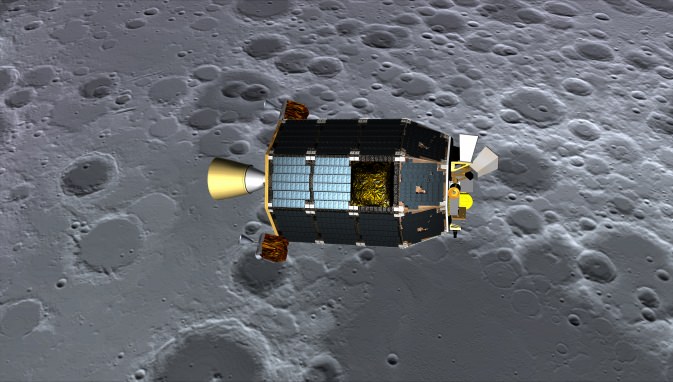
NASA’s new LADEE spacecraft successfully entered lunar orbit, is operating beautifully and has begun shooting its radical laser communications experiment despite having to accomplish a series of absolutely critical do-or-die orbital insertion engine firings with a “skeleton crew ” – all this amidst the NASA and US government shutdown, NASA Ames Research Center Director Pete Worden told Universe Today in a LADEE mission exclusive.
During the two and a half week long NASA shutdown, engineers had to fire LADEE’s maneuvering thrusters three times over six days – first to brake into elliptical orbit about the Moon and then lower it significantly and safely into a circular commissioning orbit.
“All burns went super well,” Ames Center Director Worden told me exclusivly. And he is extremely proud of the entire team of “dedicated” professional men and women who made it possible during the shutdown.
“It says a lot about our people’s dedication and capability when a skeleton crew can get a new spacecraft into lunar orbit and fully commissioned in the face of a shutdown!” Worden said to Universe Today.
“I’m really happy that everyone’s back.”
After achieving orbit, a pair of additional engine burns reduced LADEE’s altitude and period into its initial commissioning orbit and teams began the month long activation and instrument checkout phase.
“We are at the commissioning orbit of 250 km,” said Worden.
And to top all that off, LADEE’s quartet of science instruments are checked out and the ground – breaking laser communications experiment that will bring about a quantum leap in transmitting space science data has already begun its work!
“All instruments are fully checked out with covers deployed.”
“We’ve begun the Lunar Laser Communications Demonstration (LLCD) tests and its working very well,” Worden explained.
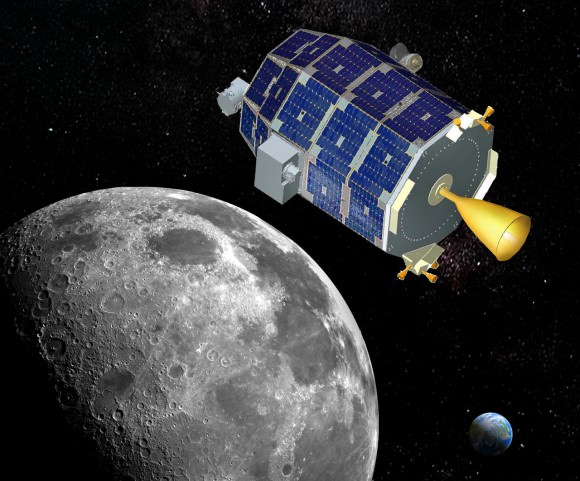
And that’s the whole point of the LADEE mission in the first place.
97% of NASA’s employees were furloughed during the utterly chaotic and wasteful partial shutdown of the US government that lasted from Oct. 1 to Oct. 17 and also temporarily threatened the upcoming launch of NASA’s next mission to Mars – the MAVEN orbiter.
However, orbital mechanics follows the natural laws of the Universe, continues unabated and waits for no one in Washington, D.C.
NASA’s Jupiter-bound Juno orbiter also flew by Earth amidst the DC shutdown showdown on Oct. 9 for a similarly critical do-or-die gravity assisted speed boost and trajectory targeting maneuver.
The stakes were extremely high for NASA’s Lunar Atmosphere and Dust Environment Explorer (LADEE) mission because the spacecraft was on course for the Moon and absolutely had to ignite its main engine on the Sunday morning of Oct. 6.
There were no second chances. If anything failed, LADEE would simply sail past the Moon with no hope of returning later.
So, mission controllers at NASA Ames commanded LADEE to ignite its main engine and enter lunar orbit on Oct. 6 following the spectacular Sept. 6 night launch from NASA’s Wallops Island spaceport in Virginia.
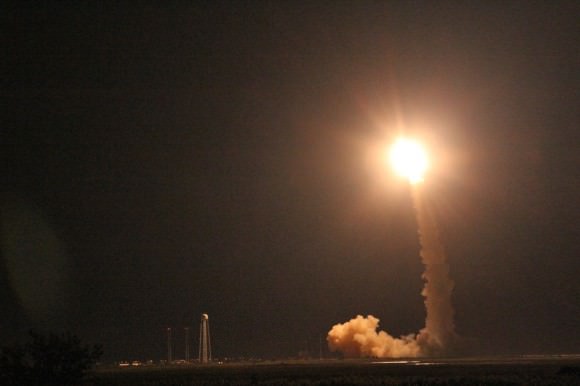
The approximately four minute long burn know as Lunar Orbit Insertion burn 1 (LOI-1) began with LADEE’s arrival at the Moon following three and a half long looping orbits of the Earth.
LOI-1 changed the spacecrafts velocity by 329.8 meters/sec so that the couch sized probe could be captured by the Moon’s gravity and be placed into a 24 hour polar elliptical orbit.
The LOI-2 maneuver on Oct. 9 put LADEE into a 4-hour elliptic lunar orbit. The third and final LOI-3 burn occurred on Oct. 12, and put the spacecraft into the 2-hour commissioning orbit (roughly 235 Km x 250 Km), according to a NASA statement.
The 844 pound (383 kg) robot explorer was assembled at NASA’s Ames Research Center, Moffett Field, Calif., and is a cooperative project with NASA Goddard Spaceflight Center in Maryland.
“LADEE is the first NASA mission with a dedicated laser communications experiment,” said Don Cornwell, mission manager for the Lunar Laser Communications Demonstration (LLCD), NASA’s Goddard Space Flight Center, Greenbelt, Md, during an interview with Universe Today at the LADEE launch.
“With the LLCD experiment, we’ll use laser communications to demonstrate at least six times more data rate from the moon than what we can do with a radio system with half the weight and 25 percent less power,” said Cornwell.
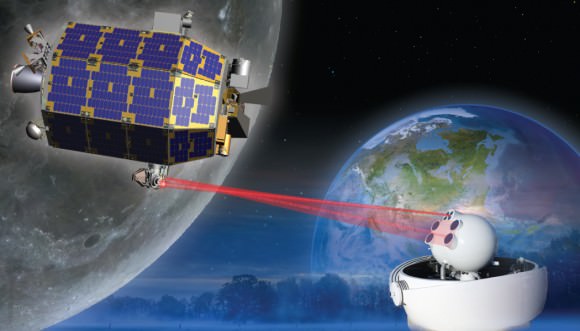
The LLCD will be operated for about 30 days during the time of the commissioning orbit period.
The purpose of LADEE is to collect data that will inform scientists in unprecedented detail about the ultra thin lunar atmosphere, environmental influences on lunar dust and conditions near the surface. In turn this will lead to a better understanding of other planetary bodies in our solar system and beyond.
The $280 million probe is built on a revolutionary ‘modular common spacecraft bus’, or body, that could dramatically cut the cost of exploring space and also be utilized on space probes to explore a wide variety of inviting targets in the solar system.
“LADEE is the first in a new class of interplanetary exploration missions,” NASA Ames Director Worden told Universe Today. “It will study the pristine moon to study significant questions.”
“This is probably our last best chance to study the pristine Moon before there is a lot of human activity there changing things.”
Stay tuned here for continuing LADEE news

Take a look around the Moon… no, really, take a good look AROUND the Moon! This is a fantastic animation of our planetary partner in space made by the folks on the Lunar Reconnaissance Orbiter team at Arizona State University. Assembled from reflectance maps and digital terrain models created from data gathered by LRO’s wide-angle camera, this full 360-degree portrait of the Moon shows its surface as if it were receiving direct top-down sunlight on all points — a physical impossibility, yes, but it gives us a great view of pretty much everything (including the far side, which for obvious reasons most of us never get a good look at.)
In addition to shining a light on the lunar landscape (pun intended) the vast amounts of data used to create the view above can also be used to calculate the type of illumination that would be found on any point on the Moon, at any time, allowing for better targeted observation planning with LRO’s narrow-angle camera.
Read more about how this process was engineered here, and see a more recent result of these new capabilities below:
While the image above wouldn’t have been visible from anywhere on North America on October 15, 2013 at 2 p.m. EDT, it’s what would have been seen in the night sky above Mumbai — but no international calls to India were needed, as the view could simply be generated from the LRO WAC data and a ray-tracing algorithm that plots the angles of light and shadow across the lunar terrain. Voilà — it’s Insta-Moon*!
*Some assembly required.
Read more on the Arizona State University LROC site here (and to really blow your mind, watch the high-resolution version here.)
Want to explore the Moon on your Android or iPhone? Check out our Phases of the Moon app!

This is completely impossible, but fun just the same. How would the Moon look from Earth if it orbited at just 420 km above our planet, which is the same orbital distance as the International Space Station? Here, for the sake of fun, we’re disregarding the Roche Limit and how a body as large as the Moon being that close would completely disrupt so many things on our planet. Plus, as people discussing this on Google+ said, it would be horrible for astrophotography!
Check out more videos by this same person, which include a size comparison of the planets and how the Moon would look if it were replaced with some of the planets in our Solar System.
For an interesting comparison, here’s an image of the ISS crossing in front of the Moon:
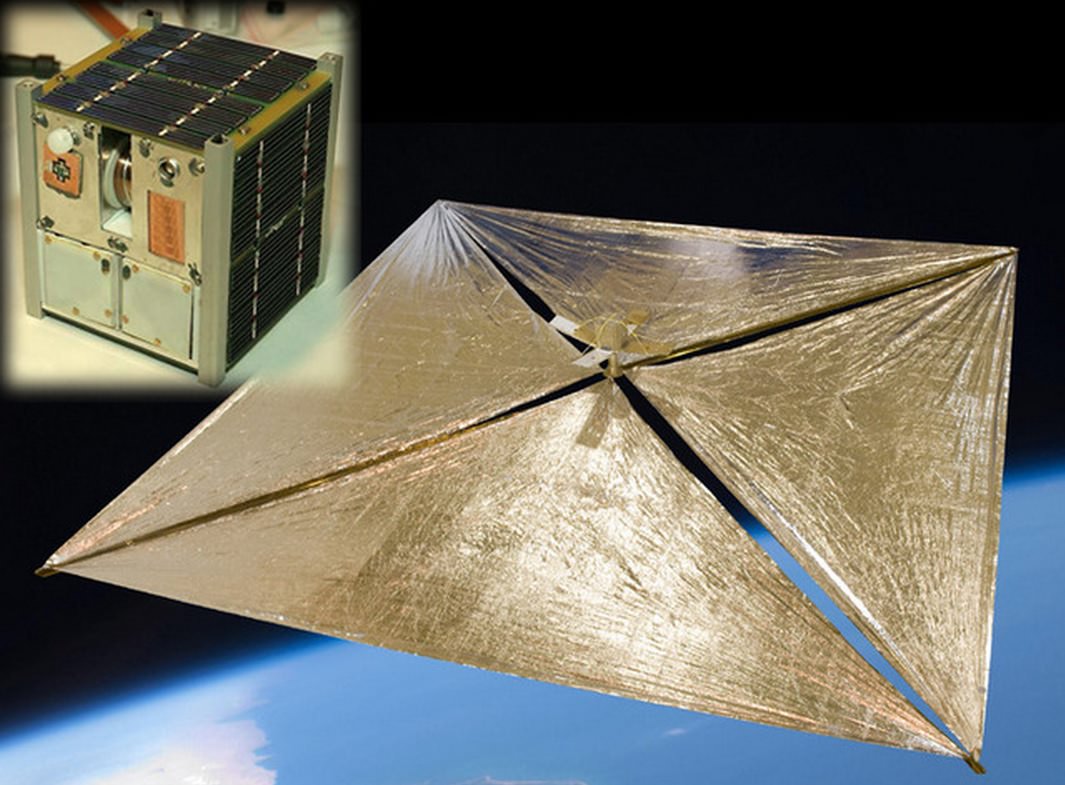
It’s a tiny satellite with ambitious goals: to zip all the way from the Earth to the Moon using a solar sail. A typical “cubesat” satellite sticks around Earth’s orbit to do a science, but the team behind Lunarsail convinced dozens of crowfunding donors that their concept can go even further.
The team asked for $11,000 on Kickstarter and actually received more than $15,000. The next step is to submit a formal proposal to NASA to hitch a ride on a rocket and get into space. (An announcement of opportunity was on NASA’s website in mid-August, but the link is currently unavailable as the agency’s site is shut down amid the government furlough. The posted deadline was Nov. 26).
“Common sense seems to suggest that cubesats don’t have the power or the huge rocket they would need to reach the Moon. Common sense can be deceptive, though,” the team wrote on their crowdfunding campaign page.
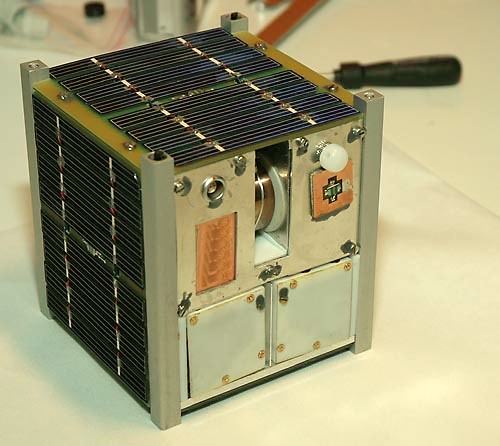
“It doesn’t take a more powerful spacecraft … the satellite doesn’t care what orbit it’s in — it just does its thing. It also doesn’t require a more powerful rocket. All we need is a rocket powerful enough to put the spacecraft into an appropriate orbit around the Earth, and then we can take over and get ourselves to the Moon.”
The Aerospace Research & Engineering Systems (ARES) Institute, which is the entity behind Lunarsail, further plans to involve students in the campaign. It’s asking around to see if there are any interested parties who could “bring mission-related science activities to thousands of students, particularly those in minority and at-risk communities.” If this goes forward, students could participate through experiments, observations and also with mobile apps.
While the team acknowledges it takes time to get a concept on a rocket and into space, they have a goal of having everything “flight-ready” by December 2016. Follow updates on the project at its web page.
We’ve got a pretty bright Moon, but that just means we’ve got another target for the Virtual Star Party.
Tonight we had beautiful views of the Moon from David Dickinson and Cory Schmitz, and then some deep sky objects from Gary Gonella and Cory. We saw Andromeda Galaxy, Bubble Nebula, Swan Nebula, Lagoon Nebula, Dumbbell Nebula. And some viewers shared their photographs, including some amazing images of the International Space Station.
Host: Fraser Cain
Astronomers: Cory Schmitz, Gary Gonella, David Dickinson
We hold the Virtual Star Party every Sunday night as a live Google+ Hangout on Air. We begin the show when it gets dark on the West Coast. If you want to get a notification, make sure you circle the Virtual Star Party on Google+. You can watch on our YouTube channel or here on Universe Today.
Developing story – NASA’s Juno-bound Jupiter orbiter successfully blazed past Earth this afternoon (Oct. 9) and gained its huge and critical gravity assisted speed boost that’s absolutely essential to reach the Jovian system in 2016.
However, Juno’s project manager Rick Nybakken told me moments ago that the Juno spacecraft unexpectedly entered ‘safe mode’ during the fly by maneuver and the mission teams are assessing the situation.
But the very good news is “Juno is power positive at this time. And we have full command ability,” said Nybakken in an exclusive phone interview with me.
“After Juno passed the period of Earth flyby closest approach at 12:21 PM PST [3:21 PM EDT] and we established communications 25 minutes later, we were in safe mode,” Nybakken told me. Nybakken is the Juno mission project manager at NASA’s Jet Propulsion Lab in Pasadena, CA.
Furthermore, the Earth flyby did place the $1.1 Billion Juno spacecraft exactly on course for Jupiter as intended.
“We are on our way to Jupiter as planned!”
“None of this affected our trajectory or the gravity assist maneuver – which is what the Earth flyby is.”
Juno’s closest approach was over South Africa at about 500 kilometers (350 miles).
“Juno hit the target corridor within 2 km of the aim point,” Nybakken elaborated to Universe Today.
Juno needs the 16,330 mph velocity boost from the Earth swingby because the Atlas V launcher was not powerful enough to hurtle the 8000 pound (3267 kg) craft fast enough on a direct path to Jupiter.
And the team is in full radio contact with the probe. Safe mode is a designated protective state.
“Prior to the eclipse, which was a few minutes earlier than closest approach, the spacecraft was ‘nominal’. When we came out of the eclipse Juno was in safe mode,” Nybakken stated.
“We are going through safe mode diagnostics steps right now.”
“We have established full uplink and downlink. And we have full command ability of the spacecraft.”
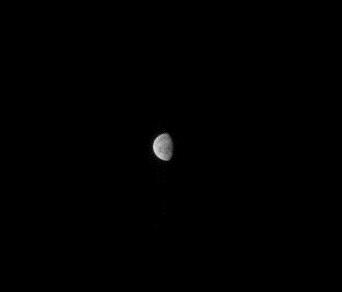
Speed boosting slingshots have been used on numerous planetary missions in the past
The spacecraft’s power situation and health is as good as can be expected.
“Juno is power positive at this time and sun pointed and stable. So we are very pleased about that,” Nybakken explained.
I asked if Juno had ever entered ‘safe mode’ before?
“We have never been in safe mode before. We are in a safe, stable state.”
“We are investigating this,” said Nybakken.
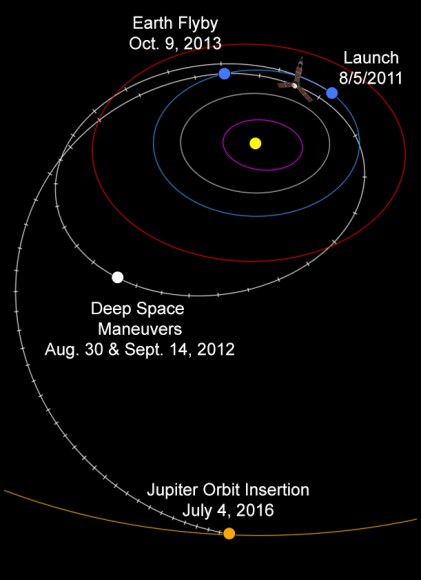
Today’s (Oct. 9) Earth flyby is the only time the spacecraft experiences an eclipse period during Juno’s entire five year and 1.7 Billion mile (2.8 Billion km) trek to Jupiter, the largest planet in our solar system.
When it finally arrives at Jupiter on July 4, 2016, Juno will become the first polar orbiting spacecraft at the gas giant.
NASA’s Juno spacecraft blasted off atop an Atlas V rocket two years ago from Cape Canaveral Air Force Station, FL, on Aug. 5, 2011 on a journey to discover the genesis of Jupiter hidden deep inside the planet’s interior.

I had an inkling that something might be amiss this afternoon when no images of Earth appeared on the Juno mission website.
So I asked the status.
“We don’t know yet if any images of Earth were collected. We hope to know soon.”
Juno flew past the Moon before the gravity assist slingshot with Earth. And it did manage to successfully capture several lunar images. See the images herein.
Read more about Juno in my flyby preview story – here.
Note: Due to the continuing chaos resulting from the US government partial shutdown caused by gridlocked politico’s in Washington DC, NASA public affairs remains shut down and is issuing no official announcements on virtually anything related to NASA! This pertains to Juno’s flyby, LADEE’s lunar arrival on Oct. 6, MAVEN’s upcoming launch in November, Cygnus at the ISS, and more!
Stay tuned here for continuing Juno, LADEE, MAVEN and more up-to-date NASA news.
